[ad_1]
First Impressions
Philips’ flagship OLED for 2023 appears to be like very appetizing with vibrant, punchy, and vibrant HDR efficiency. We’ve not seen the total extent of its capabilities, although, however its Crystal Clear image mode places in a really good-looking wanting efficiency.
Availability
- UKTBC
- USAunavailable
- EuropeTBC
- Canadaunavailable
- Australiaunavailable
-
HDR assistHDR10, HLG, HDR10+ Adaptive, Dolby Imaginative and prescient -
Sound systemNew 3.1 sound system from Bowers & Wilkin -
New UIRedesigned interface and addition of Google TV
Introduction
Given a mushy announcement earlier in 2023, the Philips OLED+908 now has the runway in sight, swooping in to land in on-line and brick & mortar retailers within the run-up to Christmas.
And at Philips TV and Audio occasion in Barcelona I used to be given a extra detailed overview and perception into what Philips is bringing to the market. Probably the most notable characteristic is its brightness, nevertheless it’s not essentially how vibrant you will get however what you do with that brightness that counts.
Design
- A refinement of the OLED+907
- Three sizes
- Central stand
I’ll waste just some phrases on the design because the OLED+908 is extra a refinement of the five-star rated OLED+907 than a serious transfer in a brand new course. As you’d count on from a premium Philips TV, it’s design is reflective of top of the range craftmanship, from the minimal edge bezel design to the built-in sound system from Bowers & Wilkins that’s decked in acoustically handled Kvadrat fabric.
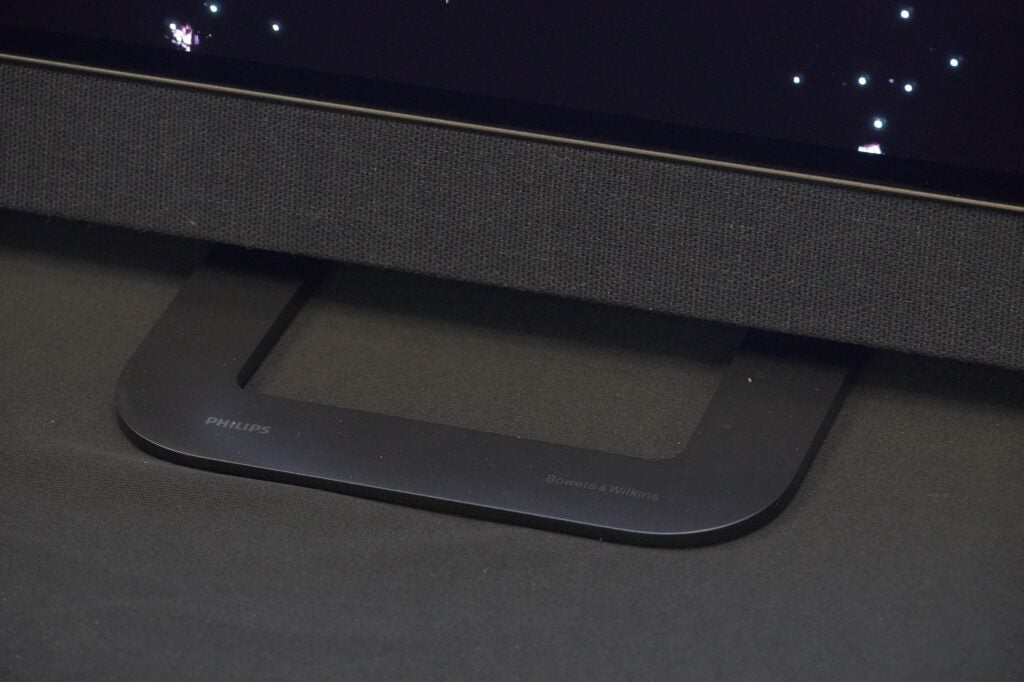
Around the rear of there’s the three-sided Ambilight ring that surrounds the part that homes the connections and the built-in subwoofer. That stand it comes with occupies a small footprint in entrance of the TV (barely larger from behind) nevertheless it ought to permit for the OLED+908 to be parked o a comparatively small plot of AV furnishings, relying on the dimensions, after all. And the OLED+908 is available in 55-, 65- and 77-inch sizes, matching the LG G3 OLED.
Options
- Google TV assist
- Redesigned distant management
- New look menu
Options weren’t the primary focus of the demonstration I noticed, however I do know that the OLED+908 is heading to market with Google TV. After chatting with Sharp at IFA 23, apparently progress has been made within the deadlock between Freeview and Google over Freeview Play integration.
It’s additionally set as much as be a gaming powerhouse too, with 4K/120Hz, VRR (HDMI VRR, AMD FreeSync, Nvidia G-Sync), ALLM, and Dolby Imaginative and prescient Sport mode included. No phrase on the enter lag however based mostly on earlier fashions count on it to be across the 15-20ms space.
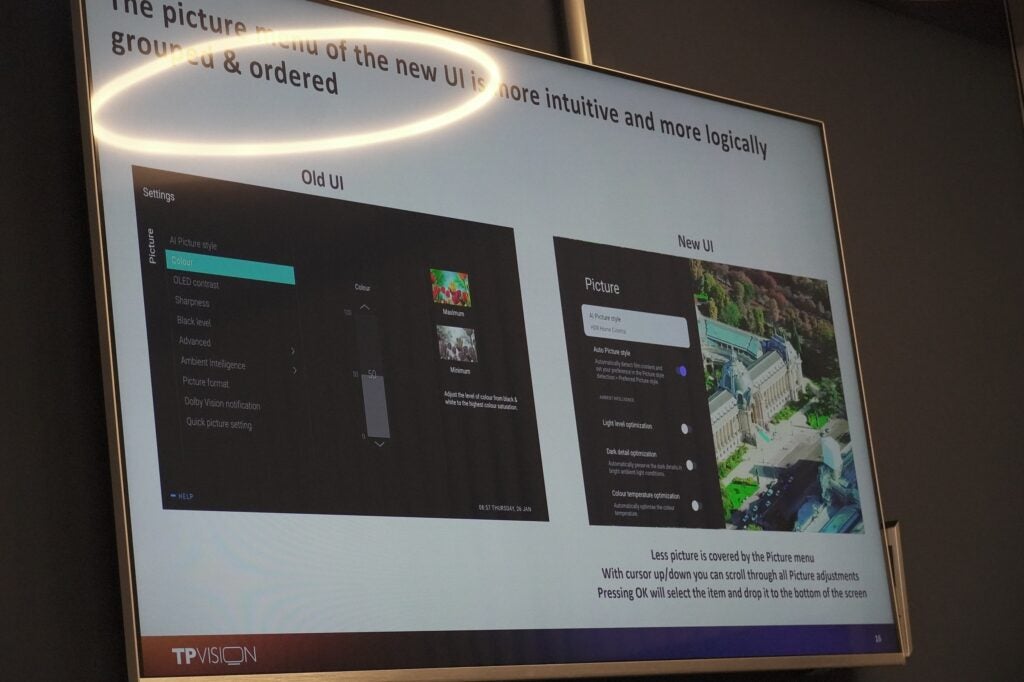
Philips has (lastly) diminished the footprint of its menu screens with a much less overbearing presence. Moderately than occupying the entire display screen, it’ll take up half of it with the primary menu overlays, and whenever you need to edit a setting, it’ll pop up as a strip within the backside half. Rather more smart.
The distant has been redesigned to be each simpler to make use of and environmentally pleasant. It’s rechargeable through USB-C and if reminiscence serves it takes three months for the battery to run down. It’s added a backlight to focus on sure buttons which might be activated by movement. And regardless of the redesign of the navigation block, it’s retained the quantity pad that seems as if by magic with the press of a button. Sadly, I didn’t take an image of the particular distant, however right here’s an image of it on a presentation.
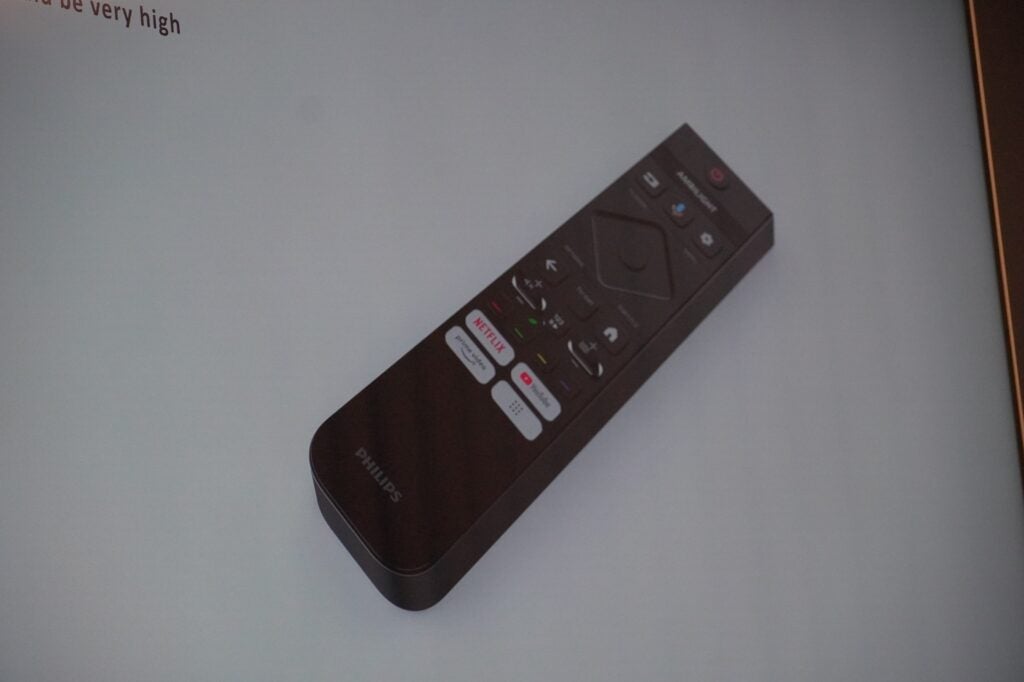
Image High quality
- Excessive peak brightness Micro Lens Array panel
- Vivid, however balanced photographs
- Slick movement processing
- Ant-Glare Vanta Black display screen
There’s a caveat to this part because the Philips OLED+908 was solely introduced in its Vivid mode equal (Crystal Clear) and demoed with the Samsung S95C and LG G3 OLED of their respective Dynamic/Vivid modes.
I perceive the rationale behind this. ‘Vivid’ sees the TV acting at its highest capabilities by way of peak brightness, however ‘Vivid’ modes aren’t essentially the identical for every model (for Samsung it’s basically their store flooring mode). Understandably, for those who’re going to have a Vivid mode in somebody’s precise house, it could possibly’t simply actually be for present. It has to convey the efficiency, too.
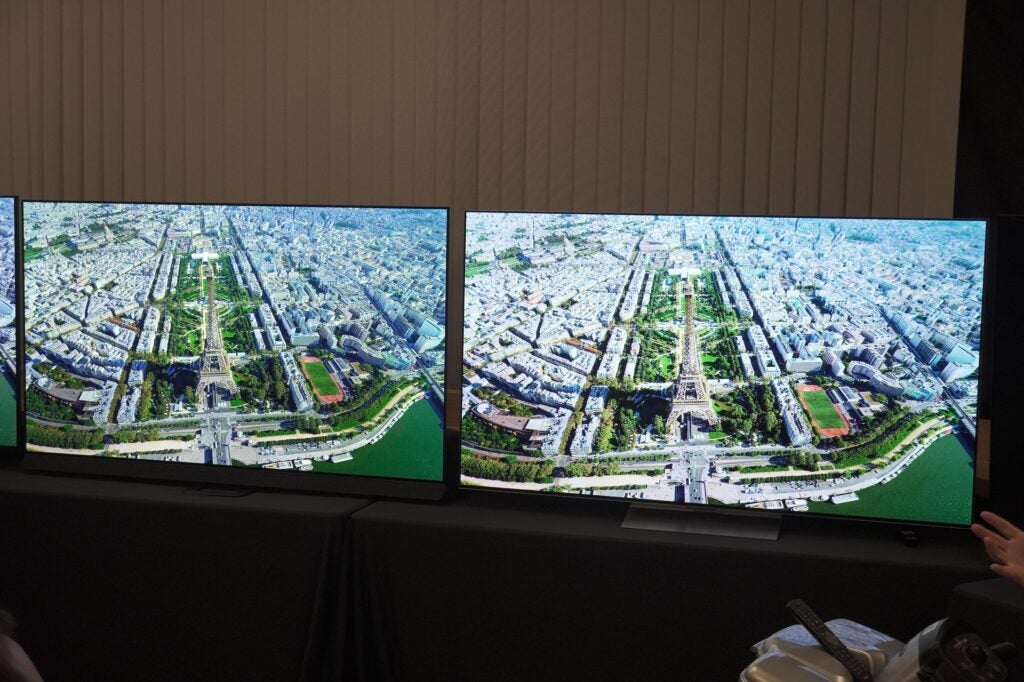
And that’s what Philips’ Crystal Clear is tooled for: efficiency, and it does impress in comparison with the Samsung and LG. A observe is that the OLED+908 makes use of the identical Micro Lens Array panel because the G3, so the efficiency ceiling is identical, it’s the processing that’ll convey out the variations.
And people variations relate to distinction, brightness, and color stability. Just like the Sony A95L, Philips has taken a extra nuanced method with its Vivid mode. It’s not an array of gaudy colors as it’s on the S95C. Pores and skin tones are extra consultant of how they need to seem and never pumped as they give the impression of being on the G3 OLED. The brightness is convincingly intense, highlights from a firework present burn with a white sizzling depth and sharpness that makes the S95C dimmer (and duller) by comparability.
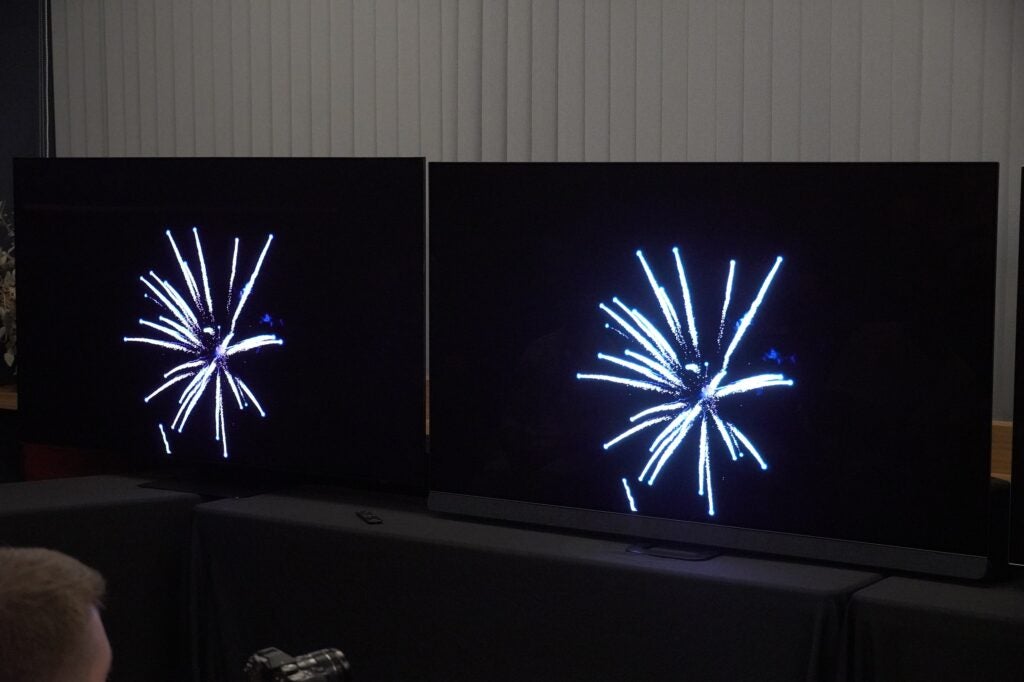
However the picture isn’t a wash out with blinding brightness – the wrinkles and patterns in a linen fabric is revealed with extra element and definition because of the 7th Gen P5 AI processor. It’s a picture that’s very vibrant but additionally retains element, whereas LG’s Vivid mode conceals the nice element with its processing.
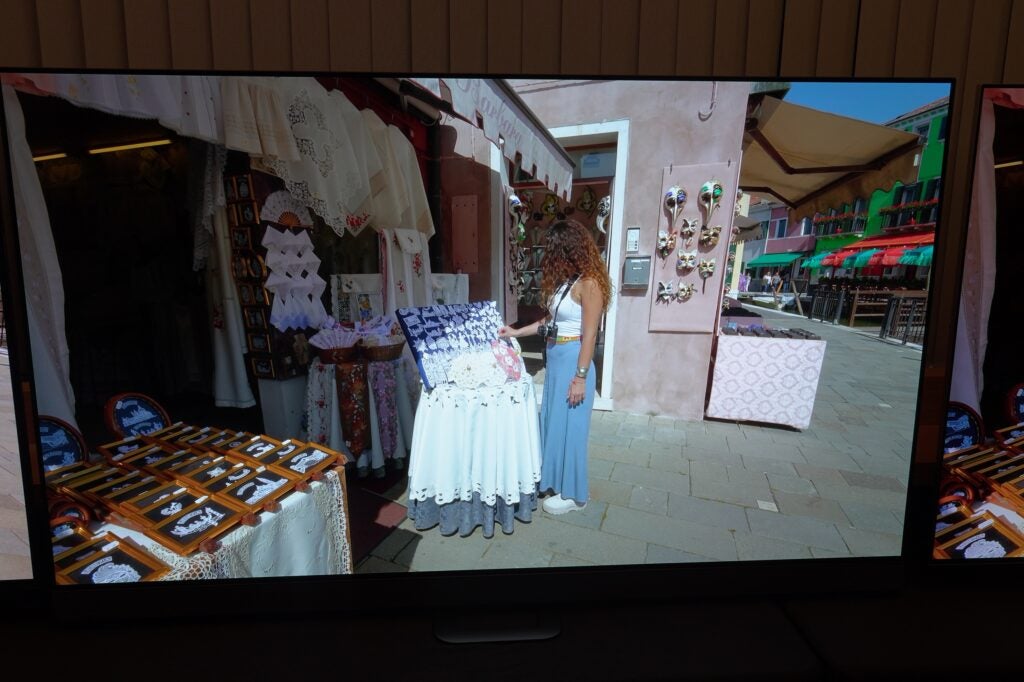
Colors are barely wider-ranging, main colors are supplied with extra nuance and punch (stronger, brighter blues, punchy reds). Distinction is expressed higher, the rooftops of a metropolis hit a distinctly blacker tone than both the Samsung or LG can muster. Movement processing is smoother and slicker, with much less obvious artefacts than the LG (which appears to be like all at sea).
The Vanta Black polarizer built-in into the panel additionally reduces reflections with its anti-glare properties. You’re much less prone to see your self within the display screen in darker scenes.
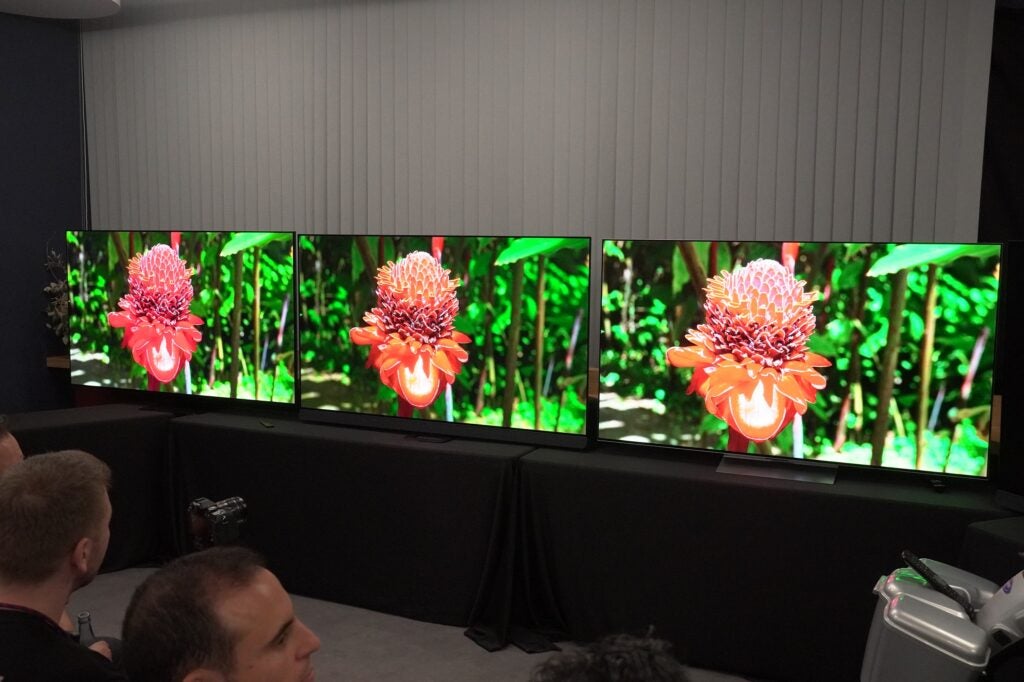
The caveat stays that Crystal Clear (Vivid) mode gained’t be the mode most immediately flip to, so the comparability doesn’t really feel fairly as merited. After all, Filmmaker mode modes flip off processing, so in concept there shouldn’t be any distinction of their respective image modes (I wasn’t proven this).
Sound High quality
I wasn’t given an illustration of the Bowers & Wilkins sound system, however the important information are it’s a 3.1 channel system with a left, centre, proper configuration, supported by a woofer and assist act of 4 passive radiators to offer the low finish thump.
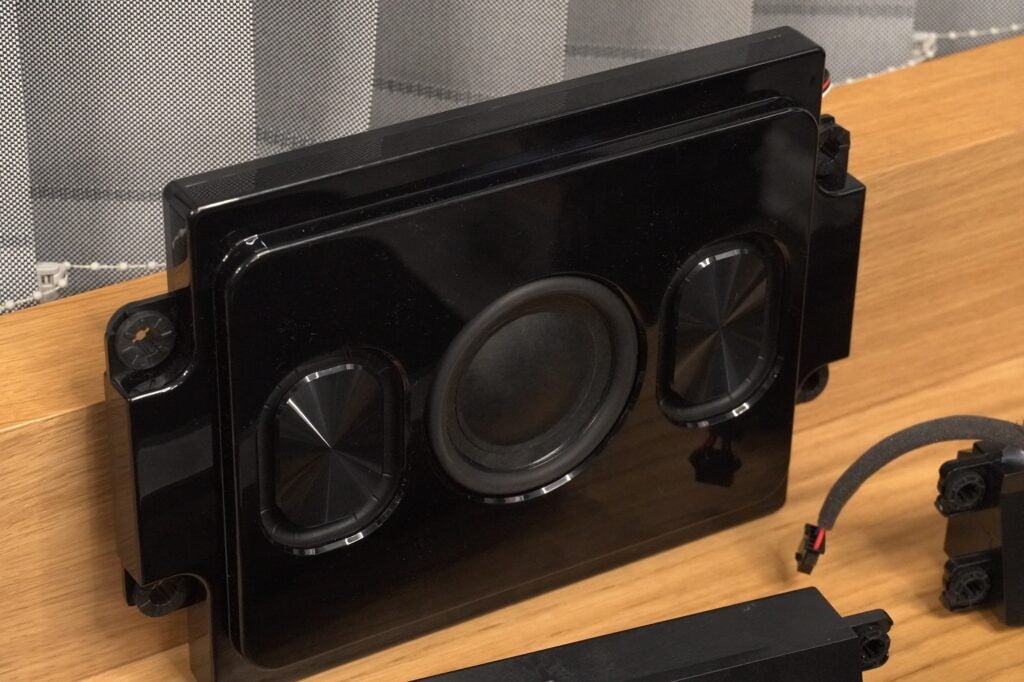
Bowers has tuned every sound mode (there are seven: AI, Leisure, Authentic, Music, Spatial Music, Dialogue, and Private (customized)); and it has tuned the sound system for every display screen measurement too.
With a complete of 80W of energy at its disposal and a Dolby Atmos virtualiser, the OLED+908’s audio system sounds promising, however I haven’t heard the way it sounds but.
First impressions
First impressions of the Philips are optimistic however with caveats in that I’ve solely been proven what Philips needs me to see.
Nonetheless, the efficiency is encouraging because the Philips OLED+908 is a TV you’ll need to watch in its Vivid/Clear mode. Its balanced image, pure colors, and stunningly vibrant distinction and highlights make for a really engaging image. I’ll have to attend and see whether or not it’s the entire bundle when overview samples begin rolling in.
[ad_2]
Source link









































